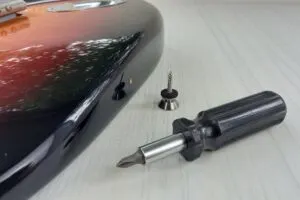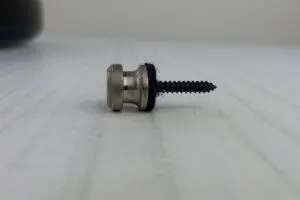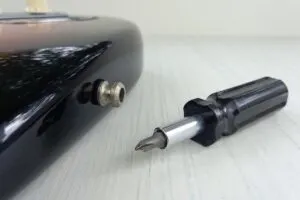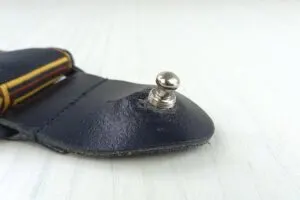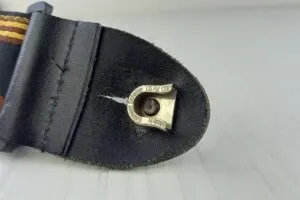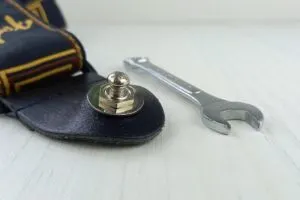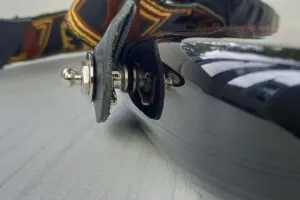Picture this: you’re standing on stage, about to wow a crowd with an amazing guitar solo but – oh no! – your precious guitar just fell to the ground!
Are you worried this could happen to you? Well, fear not! I’ve created this guide to show you how to install strap locks – a simple device that will keep your guitar firmly attached to the straps – potentially saving you hundreds of dollars from a dropped guitar!
This article will detail the ins-and-outs of strap locks. I’ll cover what they are, how they work, the various types, and how to install them in under 10 minutes. I’ll also explain the pros and cons of the various types allowing you to decide which is best for your situation.
You can use these links to jump to a section:
- What are strap locks?
- Metal, rubber, and plastic strap locks explained
- How to install strap locks on a guitar
- Pros and cons of strap locks
- Related questions
Affiliate disclaimer: This page contains affiliate links for products that I’ve tried and tested. As an Amazon Associate I earn from qualifying purchases at no additional cost to you. Learn more here.
What are strap locks?
In the most basic sense, a “strap lock” is a tool that helps you to secure and fasten your strap onto your guitar or bass. This device helps to make sure that your instrument does not come loose from the strap and fall off.
How do strap locks work?
Strap locks work by restricting the moment of the guitar strap over the strap buttons on your guitar. All guitars come with two strap buttons. These are usually located on the body toward the bridge and above the cutaway.
Typically, you will purchase a guitar strap with a hole at both ends. Most guitar straps even have multiple holes that allow you to determine the length of the strap (how low or high you would like the guitar to sit).
When you need to stand and perform, the strap holes are slid over the strap buttons which allows the guitar to hang by the strap.
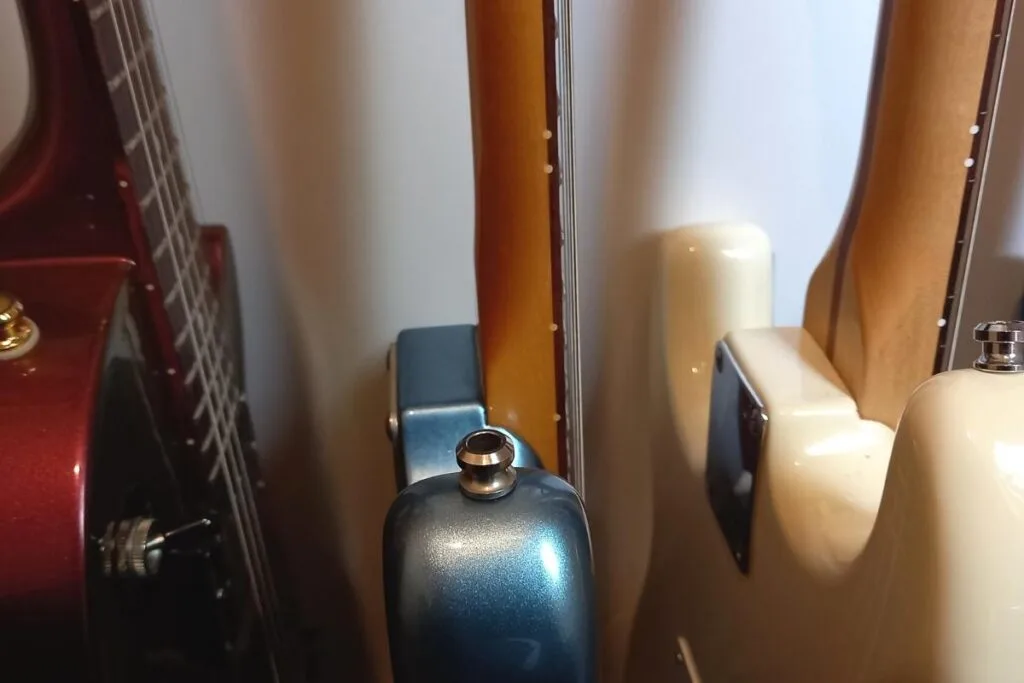
In most cases, this works perfectly fine. However, if your strap holes are loose, worn down, or you are constantly running around on stage – there is a probability that your guitar can come loose and fall!
Strap locks work by replacing the strap buttons with specifically designed and machined screws (buttons). These screws have an additional mechanism that is attached to your guitar strap. The mechanism and the button can then “lock” – securing your strap in place.
The sole purpose of strap locks is to give you the utmost confidence that your strap is securely connected to your guitar, and no matter what you do, they will not come loose.
Metal, rubber, and plastic strap locks explained
The most common type of strap locks are made of metal. These are an entire mechanism that replaces the stock strap buttons on your guitar and fastens them to your strap. These are by far the more superior version of strap locks that most players tend to use.
Personally, I have metal strap locks installed on all the guitars that I regularly use. It gives me confidence that they aren’t going to fall off midway through playing.
I use Schaller strap locks for my guitars, and highly recommend them for any guitarist. I’ve bought cheaper ones before (“Fender F” style strap locks) and they fell off midway through me playing – luckily I caught my guitar! I quickly replaced them with Schallers. Check out Schaller strap locks on Amazon here.
Rubber strap locks function differently from metal strap locks. You can think of rubber strap locks like a tight rubber washer that sits between your strap and strap buttons. They’re a lot cheaper than metal strap locks, but aren’t as sturdy in the long run. You can check them out on Amazon here.
Finally, you can also get plastic strap locks ones. These function in a similar way as the rubber ones do. That is, you slide them over your strap and buttons – but these have a mechanism that locks them into place, making them a bit sturdier. Plastic strap locks tend to be better than rubber ones – but neither are as good as metal ones. Check out the plastic strap lock on Amazon here.
My opinion: Ultimately, I recommend getting metal strap locks. I use the Schaller strap locks for all my guitars and have never had a problem!
A few dollars can really save you hundreds in guitar repair bills!
How to install strap locks on a guitar
Installing strap locks is a straightforward process and doesn’t take a lot of time. However, there are specific steps you need to take so that you don’t damage your guitar while you fit them.
These steps will explain how to install metal strap locks.
Please note: If you have plastic or rubber strap locks – simply attach the strap locks between your guitar strap and strap button – job done!
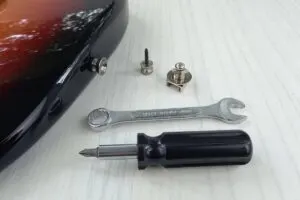
Total Time Needed :
15
Minutes
Required Tools:
Things Needed?
How to install strap locks on a guitar:
This process is simple enough, but if you need a visual aid, check out this video by Fender that goes through the entire process in under 5 minutes.
Recommended gear: I use the CruzTools Stagehand Compact Tech Kit for small maintenance jobs like these. It contains the screwdriver and Allen wrench heads needed for this job. It also contains a lot of other tools needed to properly maintain your guitar. You can pick one up using this link to Amazon.
Pros and cons of strap locks
The pros of metal strap locks are that they are heavy-duty and are built to withstand a lot of wear. The cons are that they do cost more than plastic and rubber strap locks. Also, you’ll have to install them yourself. However, this tutorial should have made it clear and simple enough for you to understand that installing them is a walk in the park!
The pros of plastic and rubber strap locks are that they are very affordable. Moreover, you do not have to worry about installing anything – you simply slide them over your strap and buttons, and you’re all set.
The cons of plastic and rubber strap locks are that they are not as sturdy as steel ones. This means that there is a chance they can either break or come loose.
My opinion: I think strap locks are a must-have for any serious guitar player. They’re like a small insurance against the risk of dropping your precious axe.
As someone who used to have issues with my guitar strap falling off – I can confidently say that I’ve never had a problem since installing strap locks! (With the exception of “Fender F” strap locks – they fell off after a few uses, I don’t recommend buying those!)
Conclusion
Strap locks are a must-have if you practice and perform guitar standing up. These little devices will take away the uncertainty of your strap falling off, giving you the peace of mind to focus on your playing.
Depending on your needs and budget, there are various ones you can purchase. For the most part, they all do a pretty good job!
Installing metal strap locks is relatively simple and shouldn’t take more than 5 or 10 minutes. Just make sure to pre-assemble the parts and make sure they’re fastened tightly to your guitar.
Related questions
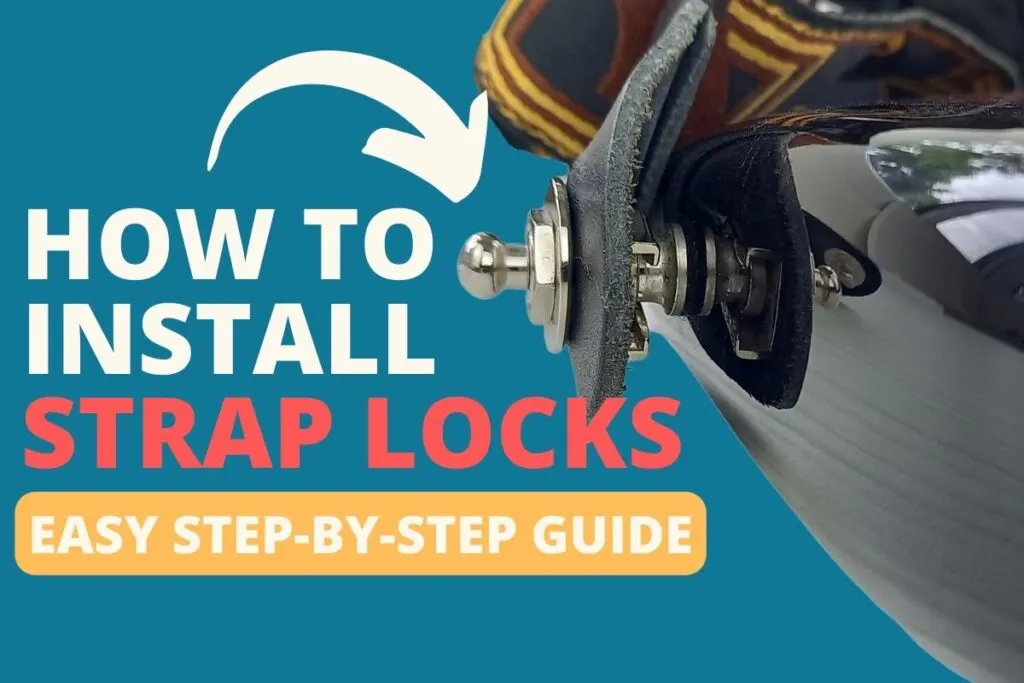

Conor is a music producer, multi-instrumentalist, and all-round enthusiast from the UK with over 15 years of experience. He’s the founder and sole-content creator for the roundtable audio blog and YouTube channel.

